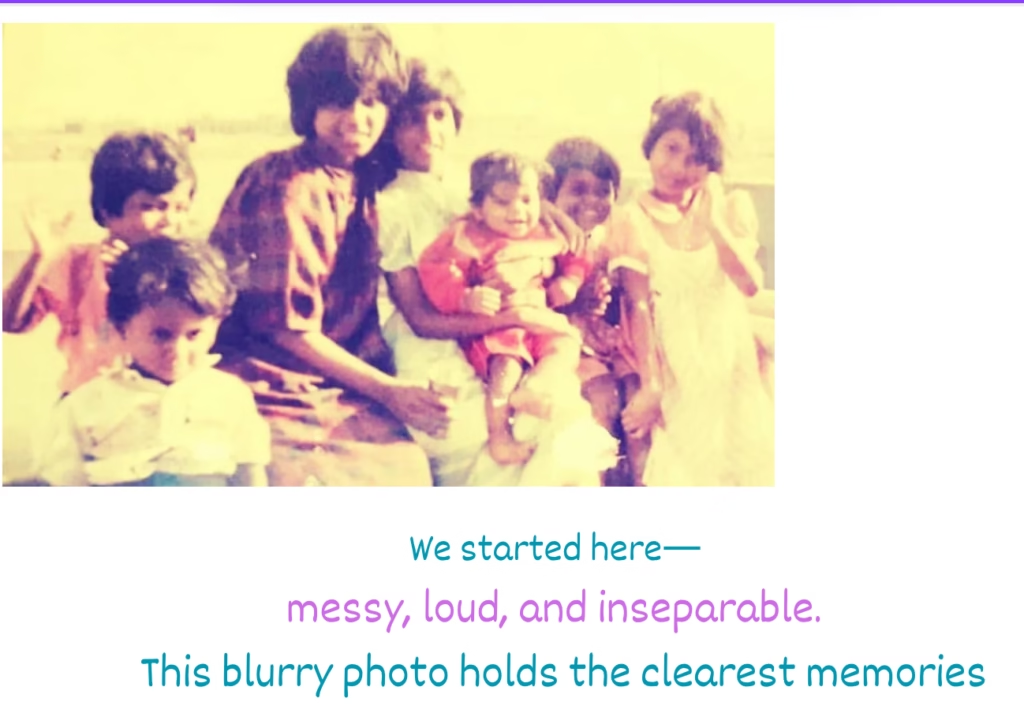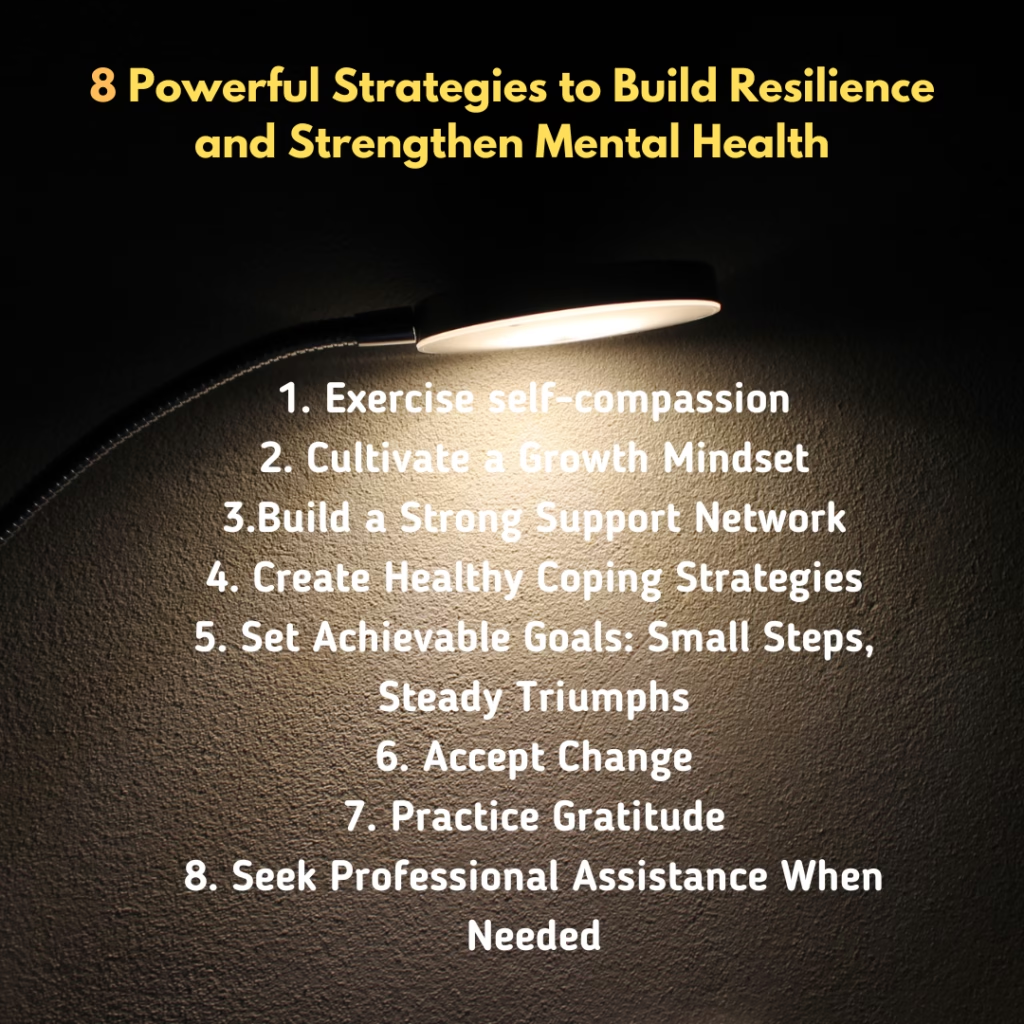
Resilience and mental health are closely related. Resilience is more than simply a skill; it’s a lifeline in a world full with obstacles. You may experience numerous setbacks, but you must not give up,” Maya Angelou famously stated.”Today, I would like to share my resilience journey and what enabled me, to not only endure but flourish despite extreme adversity.”
People have said that I’m “too intense.” Too obstinate. Too much. However, when life required all of me, that “too much” turned into just enough. Survival and the unwavering love are the main themes of this tale, not equilibrium.
“The reasons I push boundaries may not be clear to everyone. The goal of resilience, however, is to prove to oneself what is possible, not to please others.”
At fourteen, life taught me a harsh lesson in loss. Our large, lively family was suddenly left navigating the world without its heart—my mother. My father, a remarkable man of science and compassion, made the extraordinary sacrifices to become our rock. Together, we siblings forged an unbreakable bond, learning too young how love becomes both armour and glue when the world fractures.”What follows in this blog isn’t just my own journey , but 8 battle-tested strategies that helped me.
What is Resilience and Why Does It Matter?
The capacity to bounce back from setbacks, adjust to change, and continue moving forward despite all challenge’s, is resilience. It’s about meeting challenges head-on with bravery and solve It, no matter what.
Resilience is not about how hard you hit the ground—it’s about how fiercely you rise, hand-in-hand with those who refuse to let you fall. Resilience for us as a children’s were, to take care of each other and home, very early in life. I recall hardly getting three to four hours of sleep, studying for school while preparing meals, and still performing well academically. Even though it wasn’t easy, but we did it together as a team Family.
The Connection Between Mental Health and Resilience
Resilience and mental health are closely related. We may develop resilience with a solid mental health foundation, and resilience safeguards our mental health. As the proverb goes,”Fall seven times, stand up eight.”
Losing my sister meant losing my compass—she was the one who read my silences, loved fiercely through action, and wrote poems that mapped my worth. In the wreckage of grief, one truth anchored me: she hated seeing me suffer. That became my lifeline. When depression made even basic tasks impossible, I clung to her belief in me—studying through tears until I secured my post-graduation seat. Passing that exam felt like keeping a promise to her memory, a quiet defiance of despair. Some call it survivor’s guilt; I call it love with nowhere else to go.”
8 Powerful Strategies to Build Resilience and Strengthen Mental Health

1. Exercise self-compassion
Life’s toughest moments test our ability to rise, but resilience is a choice we make every day. When faced with profound loss, I discovered that self-compassion—treating myself with the same kindness I’d offer a loved one—became my anchor. Instead of letting grief define me, I chose to honor what mattered most by seeking purpose and positivity. The journey wasn’t easy, but small steps forward, fueled by love and determination, proved that even in darkness, we can find strength we never knew we had. Resilience isn’t about avoiding pain; it’s about refusing to let it extinguish your light.
2. Cultivate a Growth Mindset
A growth mindset transforms obstacles into opportunities—the belief that challenges aren’t setbacks, but stepping stones. As Carol Dweck reminds us, ‘Becoming is better than being.’ My own journey—from liver transplant anesthesiologist to blogger at 47—proves that reinvention is possible at any stage. Though this new path is just a month old, my commitment to it is unwavering. The future may be uncertain, but that’s where the excitement lies. After all, life isn’t about the destination; it’s about the courage to keep evolving, learning, and embracing the unknown.”
3.Build a Strong Support Network
No one overcomes adversity alone. In our family, unconditional support and teamwork were our greatest strengths. As Helen Keller wisely said, ‘Alone we can do so little; together we can do so much.’ My elder sister embodied this spirit—she paused her studies to care for us, becoming like a second mother. Though just a teenager, her maturity and sacrifice left a lasting legacy of love. Even now, she remains our anchor in times of need.
Later, when we left home to pursue our paths, my brother stepped into that same role, earning our deepest respect. Together, we’ve learned to approach life with resilience and optimism. We don’t dwell on problems; we focus on solutions. That mindset—forged through shared struggles—has shaped who we are and how we face the future.
4. Create Healthy Coping Strategies
During my darkest days, I found strength in healthy coping mechanisms—spirituality and positive affirmations became my lifelines. As Thich Nhat Hanh beautifully expressed, ‘Emotions come and go like clouds in a windy sky.’ For me, conscious breathing became an anchor.
My journey included yoga, meditation, and completing Sadhguru’s Inner Engineering program. Daily rituals—reciting mantras, lighting the diya, reading Sai Satcharitra, and prayer—grounded me. The wisdom of the Gita and Mandukya Upanishad, along with my faith in Om, deepened my resilience.
Life was never meant to be an easy path. We all need something to hold onto. For me, spirituality and affirmations have been that steadying force, guiding me through every storm.
5. Set Achievable Goals: Small Steps, Steady Triumphs
Goals are more than checkboxes—they’re lifelines.
When grief threatened to swallow me whole after losing my sister, I anchored myself to one tangible light: passing that competitive exam. It was no longer about ambition; it was survival. Tony Robbins’ words became my compass: ‘The first step in turning the invisible into the visible is setting goals.’
So I began. Not with grand plans, but with microscopic victories:
- 30 minutes of studying between tears.
- Showing up, even on days when ‘progress’ meant just opening the textbook.
What seemed like endurance at the time, I now recognise as resilience in its purest form—not a single heroic effort, but the quiet accumulation of steps forward.”
6. Accept Change
Change is the one constant we cannot outrun—but resilience lies in how we meet it. As Charles Darwin observed, ‘It is not the strongest species that survives, nor the most intelligent, but the one most responsive to change.’
My own journey from liver transplant anaesthetist to blogging and entrepreneurship tested this truth. For years, my identity was tied to the hospital: the rhythmic beep of monitors, the weight of a stethoscope around my neck. Leaving that world felt like shedding a second skin. Yet with each uncertain step into the unknown—learning SEO, pitching ideas instead of administering anaesthesia—I discovered adaptability isn’t about abandoning the past, but carrying its lessons forward.
The hurdles? Daunting. Writing my first blog post took longer than a Liver Transplant Surgery. Entrepreneurship taught me to see failure as feedback—just as a anaesthetist adjusts approach to treatment based on a patient’s vitals, I learned to pivot my work based on what the data showed.
Now, when former colleagues ask why I left, I tell them this: ‘Survival isn’t about clinging to shore—it’s about learning to swim in new waters.’ My career pivot wasn’t an ending; it was evolution in action.”
7. Practice Gratitude
Gratitude shifts your gaze—from the empty spaces to the fullness already there. As Melody Beattie wrote, ‘Gratitude turns what we have into enough.’ For me, this meant anchoring myself in the love my sister poured into her poems, the quiet sacrifices my father made without complaint, and the unshakable bond of family. These weren’t just blessings; they became my compass, pointing me back to hope when the world felt fragile.
As a child, I spoke little—but my sister spoke for me. While I loved fiercely through quiet acts, she declared it a thousand ways: in words, in poems, in battles fought on my behalf. She knew me in ways no one else did.
Now, when I write about her, my eyes still swell. My one regret? That I never mirrored her verbal love aloud. But her absence taught me this: love shouldn’t live in the shadows of silence. So I changed. I learned to voice what matters—not to everyone, but to those who earn it. My connections are fewer now, but they run deep. And in that way, she’s still teaching me how to love: boldly, visibly, without regret. I’m still not one for grand speeches. But when I say ‘I love you’ now, I imagine her smiling—somewhere beyond the words, beyond the page, beyond the silence we finally broke together.”
8. Seek Professional Assistance When Needed
The Self-Designed Therapy That Worked for Me
Resilience isn’t one-size-fits-all. Mine was forged through a patchwork of tools I stitched together myself:
- My family as both mirror and compass, reflecting my worth and pointing me forward.
- Positive affirmations to rewrite the scripts of self-doubt (“I am capable of navigating this”).
- Radical self-honesty, staring down truths like, “Grief isn’t a problem to solve—it’s a terrain to cross.”
- Solution-focused grit, asking not “Why me?” but “What now?”
Was it therapy? Not formally. But it was therapeutic in the truest sense: a deliberate recalibration of mind and spirit. For those without access to professional help (or who, like me, found their answers elsewhere), this is permission: Your healing counts, even if it doesn’t come with a therapist’s note.
That said—if your DIY toolkit feels insufficient someday, reaching for professional guidance isn’t a failure. It’s just another way to keep rebuilding.”
How My Spiritual Practice Shaped My Resilience
I don’t claim to have answers for everyone—but I’ll share what worked for me. At my lowest points, three beliefs became lifelines:
- Words and thoughts carry weight. (Ever noticed how saying “I can’t handle this” drains you, while “I’ll try” shifts something?)
- Prayer isn’t passive. For me, it’s a reminder that I’m part of something larger, not alone in the struggle.
- Energy flows where attention goes. Fixate on problems, and they multiply. Focus on solutions, and pathways appear.
My Daily Tools:
- Mantras: Less about mysticism, more about rhythm. Repeating “I am enough” isn’t magic—it’s mental muscle memory.
- Selective Speech: I avoid phrases like “This will destroy me” (even in jest), because language shapes reality.
- Gratitude as a Filter: Before bed, I name three things that didn’t break me. Some days, that list was very short—but it existed.
Why Share This?
Not to convert, but to offer options. If my sister’s death taught me anything, it’s that we all need anchors. Yours might be therapy, nature, or art. Mine happened to be this.
So take what resonates, leave what doesn’t—and know that healing isn’t a dogma, but a dance only you can choreograph.”
Real-Life Examples of Resilience
Resilience isn’t given – it’s grown through how we meet our hardest moments. Three stories that shaped my understanding:
- Our Family’s Unbreakable Bond
Losing first our mother, then my sister could have shattered us. Instead, we learned to love in past tense – holding memories as both wounds and wisdom. - Malala’s Defiant Pen
When violence tried to silence her, she turned trauma into textbooks – proving fear loses when education persists. - Hawking’s Cosmic Mind
His body failed spectacularly while his mind mapped the universe – showing physical limits mean nothing to human potential.
As Oprah says, ‘Turn wounds into wisdom.’ These aren’t just inspiring stories – they’re living proof that resilience is the quiet art of making pain purposeful.
Cultivating Everyday Mental Wellness: Practical Strategies That Work
True mental strength grows from consistent daily practice. These are the habits that sustain me:
- Self-Care as Foundation
Treat your wellbeing like essential maintenance – not luxury, but vital upkeep for your mind and soul. - Meaningful Connections
Invest in relationships that feel like safe harbors – people who uplift rather than deplete your energy reserves. - Present-Moment Awareness
When anxiety about tomorrow or regrets about yesterday surface, ground yourself in the now through conscious breathing. - Selective Energy Investment
Be ruthless about protecting your peace. Toxic influences drain resilience – recognize when to step away. - Honoring Progress
Mental health isn’t about dramatic breakthroughs but celebrating small, consistent steps forward.
As the Dalai Lama teaches: “Inner peace begins the moment you choose not to let outside circumstances control your emotions.” These practices put that wisdom into action.”
Conclusion
Learning to dance in the rain is what resilience is all about, not avoiding storms. Loss, changing careers, and self-discovery have taught me that life’s most difficult lessons are where our greatest strength arises. Now, when I watch my cat joyfully chase sunbeams, I am reminded that healing is a daily practice of appreciating life’s small pleasures rather than a goal. Although your path won’t be the same as mine, you have an equally strong resilience. Are you prepared to start? I’d love to encourage you if you could leave a comment with one tiny method you plan to exercise resilience this week. “🌱💪”

2 thoughts on “Resilience 8: Proven Strategies to Rise Stronger (Backed by My Journey)”
Comments are closed.